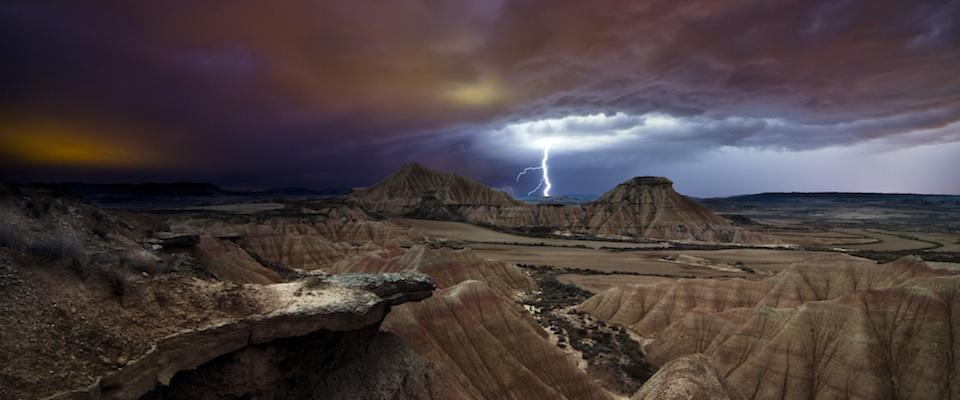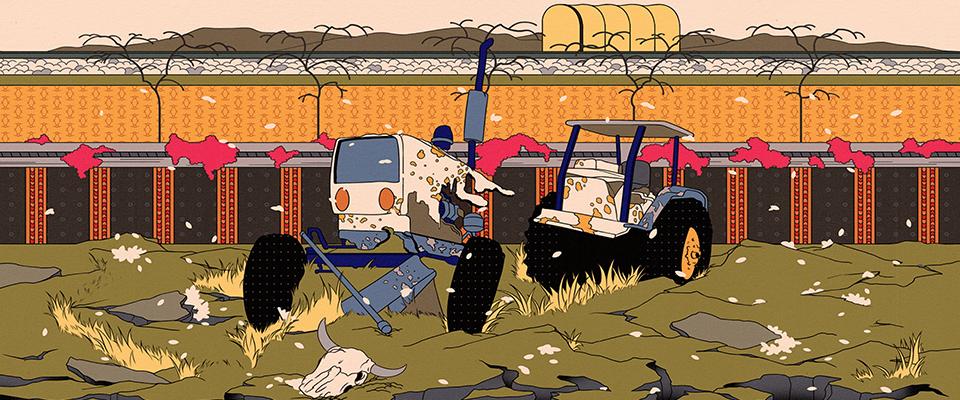If the past is any indication, we may be in for some rough weather.
During a terrible storm in the winter of 1969, Berkeley professor Lynn Ingram, just 8 years old at the time, remembers looking out her window and seeing her backyard disappear. The rain-drenched earth of her Santa Barbara home was sliding down into the canyon below. She worried that her whole house would wash away.
That storm was one of a series that flooded the southern coast of California. Over the next few weeks, the area received almost five times the average precipitation. And although Ingram’s home was saved, hundreds of others were destroyed, and nearly 100 people died. The city landscape was transformed into a network of lakes, rivers, and mudslides. Counties throughout California declared a state of emergency.
Today, Ingram credits that experience with her current interest in the history of weather on the West Coast. A paleoclimatologist, Ingram examines the sediment of waterways for traces of prehistoric weather patterns. She spotted evidence in the San Francisco estuary that made her suspect the storm she had witnessed as a child wasn’t a freak weather event, but rather one iteration of a pattern of such events. In fact, her research suggested a series of extreme floods and droughts had hit the West Coast at regular intervals over the last 11,000 years.
Curious, she shared her findings with other climate scientists and began to piece together a larger picture of weather patterns on the West Coast. “As paleoclimatologists, we can provide the larger historical backdrop,” Ingram says. Most climatologists focus on the last 50 to 100 years, “so they’re not getting the full picture, [as] we are.” She began to realize what the past meant for the future of weather—and water—in California.
That was eight years ago. This fall, she and her colleague Frances Malamud-Roam ’86, M.A. ’93, Ph.D. ’02, will publish a book, The West Without Water, based on evidence gathered from multiple researchers and compiled into a comprehensive view of the West Coast climate.
Weather in California has been mild for the last 150 years, but that’s not necessarily the norm, warn the authors. And if the past is any indication of what normal conditions are, the West is in for some rough times. Throw global warming into the mix, and things are likely to get even uglier.
California relies on regular rain brought on by narrow bands of moisture-laden air streams called atmospheric rivers. Over the course of an average winter, about six atmospheric rivers arrive on the West Coast, filling reservoirs with rain and adding snow to the Sierra Nevada. The snow pack becomes crucial during the dry summers—as it slowly melts, it continually feeds the rivers and reservoirs.
Periodically, global climate conditions produce oversized atmospheric rivers that dump massive amounts of rain on the West Coast. One of the greatest floods in the written history of California occurred in the winter of 1861–62. So much rain fell that large areas of the Central Valley were flooded, the state went bankrupt, and it was necessary to relocate the capital to San Francisco for a few months. But past climate data suggest a track record of such floods, and worse, hitting Northern California every 100 to 120 years.
The lack of atmospheric rivers and other rainfall brings on droughts, a condition Californians know all too well. A recent dry spell between 2007 and 2009 left reservoirs running dangerously low and forced municipalities to ration water. That’s nothing, according to Ingram and her coauthor. In the past, megadroughts lasted decades. The period A.D. 900–1400 held two such droughts, now considered to be examples of what the West Coast could experience in the future. During one such dry spell, Lake Tahoe’s water level dropped by more than 20 feet. At another time, California was so dry that Lake Tulare, which once spanned 690 square miles and was called the largest freshwater lake west of the Great Lakes, completely evaporated.
These extremes may be hard to imagine in a time when we are able to turn on our faucets and get as much water as we please. Nevertheless, Ingram says, we are in an unusually mild time in California’s climate history. And global warming is likely to make things worse. Although research is ongoing, climate models suggest weather patterns will fluctuate more and become more extreme. Atmospheric rivers will become warmer and carry more water. This in turn will lead to more flooding because the warmer rain will melt snow, causing more runoff. The early melting of snow will reduce the snow pack, making summers drier. More droughts could lead to more wildfires.
The lesson, Ingram says, is to prepare now. When planning development, policymakers need to consider the impacts of climate change, including floods, sea-rise, and wildfires. California and other dry states should more aggressively adopt water-saving measures such as conservation, water recycling, and the use of grey and rainwater.
“We’re in this state of complacency where we think that everything is going to be just fine somehow,” Ingram says. “Unfortunately, I think that’s not the case.”




















